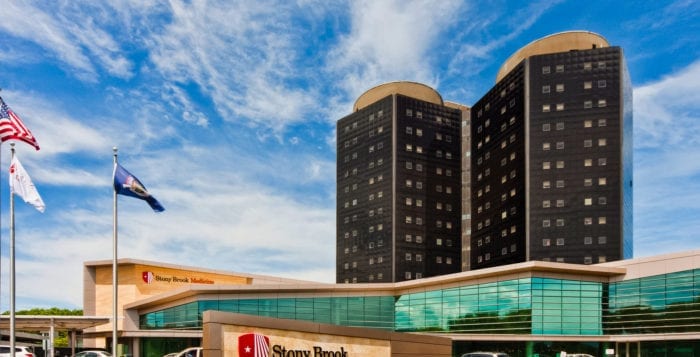Eye on Medicine: SBU Hospital celebrates 40th year
By Carol Gomes

I often tell people that Stony Brook University Hospital and I grew up together. The hospital first opened its doors in 1980, as the region’s first academic medical center. And just five years later, I was hired as a clinical laboratory scientist. Since then, the hospital has grown exponentially. And so has my role. Today I have the honor and privilege of serving as its Chief Executive Officer. We’ve both come a long way!
During its first year in operation, SBU Hospital employed 800 people. We now employ over 7,000 and are part of an 818-bed healthcare system. Through all the change and growth, one constant has remained, allowing Stony Brook University Hospital to achieve excellence, including recognition as one of America’s 100 Best Hospitals™ for 2019 and 2020.
That constant, the source of our greatest strength, is in the people who work at our hospital every single day and give it their all. And with their expertise, they provide the compassionate care that helps patients heal. If it weren’t for the healthcare professionals who are the fabric of the organization, we wouldn’t be a high-quality, patient safety-award-winning organization.
Did you know that when we first opened, Stony Brook University Hospital was one of the few hospitals in New York State with a nursing staff that consisted entirely of registered nurses?
Or that in 1981, the first kidney transplant on Long Island was performed at our hospital?
The reputation of our hospital as a research center also began to gain momentum around that time. In 1982, it was announced that the discovery of the spirochete responsible for Lyme disease was made by a Stony Brook team led by Jorge Benach, PhD. A decade before, Stony Brook University researcher Paul Lauterbur, PhD, created the first multi-dimensional image using nuclear magnetic resonance (NMR). His 1971 discovery made it possible to get a clear look inside the human body without surgery or x-rays. Dr. Lauterbur would go on to receive the 2003 Nobel Prize in Physiology or Medicine.
We have so many proud moments and milestones. Our Burn Unit, opened in 1984, is now designated as the regional center for burn care and known as the Suffolk County Volunteer Firefighters Burn Center. In 1988, our hospital was named the regional AIDS treatment center – one of only two in the state at the time. In 1989, I remember watching the first Suffolk County Police helicopter touch down on the hospital’s helipad to provide transport of the critically ill or injured to the hospital from throughout Suffolk County.
At the start of 1990, the hospital was designated by New York State as a Level I Trauma Center. That same year, the hospital opened its Comprehensive Psychiatric Emergency Program (CPEP), which became another New York State-designated service. All of the hospital’s state designations are still in place today.
In 2001, on the heels of our 20th anniversary, we began to lay the foundation for growth. The different phases of construction, renovation and rebuilding have resulted in a multitude of new services, programs, faculty and facilities that continue to serve and benefit our communities today and into the future.
Advanced Specialty Care, our multispecialty center in Commack that opened in 2017, offers more than 30 medical specialties. Our Medical and Research Translation building, Stony Brook University Cancer Center and 150-bed Hospital Pavilion, which includes a new facility for Stony Brook Children’s Hospital opened in 2019.
And this year, our Children’s Hospital — the first and only children’s hospital in Suffolk County — is celebrating its 10th year, while combining the best practices in modern pediatric medicine with a child- and family-first philosophy.
I can’t wait to see what the next 10, 20, 30, 40 years bring!
Carol A. Gomes is the Chief Executive Officer of Stony Brook University Hospital.







